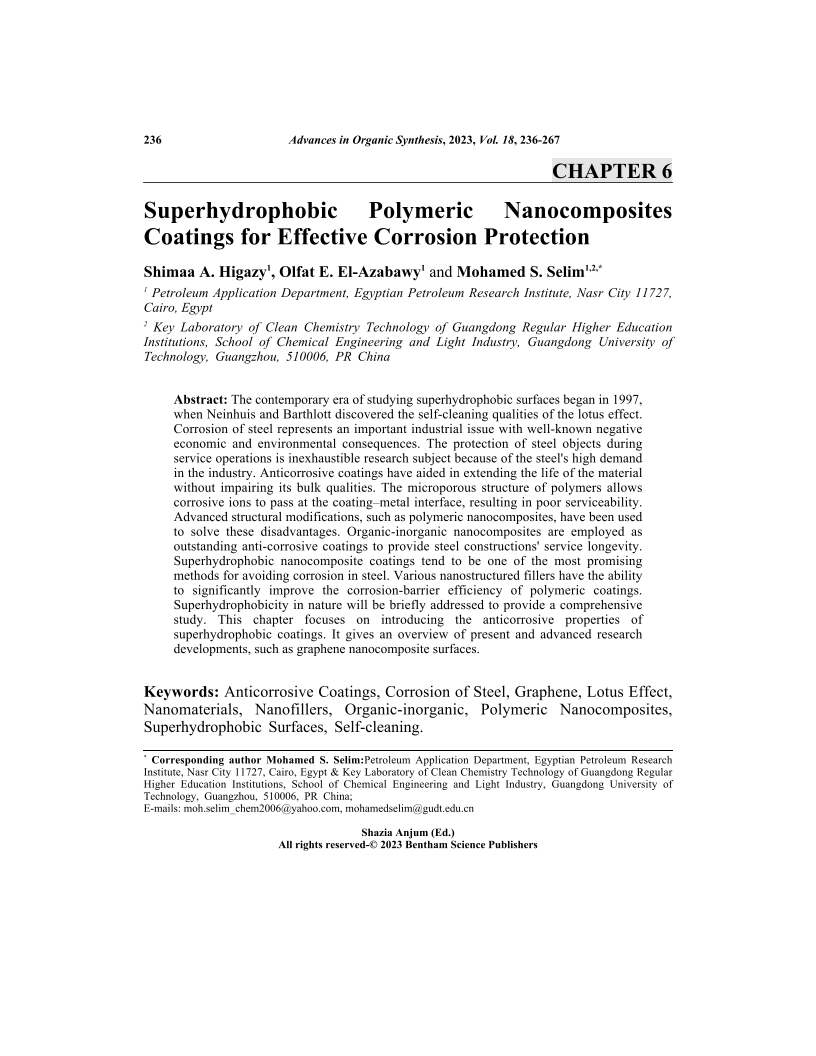Superhydrophobic Polymeric Nanocomposites Coatings for Effective Corrosion Protection

- Authors: Shimaa A. Higazy1, Olfat E. El Azabawy2, Mohamed S. Selim3
-
View Affiliations Hide AffiliationsAffiliations: 1 Petroleum Application Department, Egyptian Petroleum Research Institute, Nasr City 11727, Cairo, Egypt 2 Petroleum Application Department, Egyptian Petroleum Research Institute, Nasr City 11727, Cairo, Egypt 3 Petroleum Application Department, Egyptian Petroleum Research Institute, Nasr City 11727, Cairo, Egypt
- Source: Advances in Organic Synthesis: Volume 18 , pp 236-267
- Publication Date: September 2023
- Language: English
Superhydrophobic Polymeric Nanocomposites Coatings for Effective Corrosion Protection, Page 1 of 1
< Previous page | Next page > /docserver/preview/fulltext/9789815040791/chap6-1.gif
The contemporary era of studying superhydrophobic surfaces began in 1997, when Neinhuis and Barthlott discovered the self-cleaning qualities of the lotus effect. Corrosion of steel represents an important industrial issue with well-known negative economic and environmental consequences. The protection of steel objects during service operations is an inexhaustible research subject because of the steel's high demand in the industry. Anticorrosive coatings have aided in extending the life of the material without impairing its bulk qualities. The microporous structure of polymers allows corrosive ions to pass at the coating–metal interface, resulting in poor serviceability. Advanced structural modifications, such as polymeric nanocomposites, have been used to solve these disadvantages. Organic-inorganic nanocomposites are employed as outstanding anti-corrosive coatings to provide steel constructions' service longevity. Superhydrophobic nanocomposite coatings tend to be one of the most promising methods for avoiding corrosion in steel. Various nanostructured fillers have the ability to significantly improve the corrosion-barrier efficiency of polymeric coatings. Superhydrophobicity in nature will be briefly addressed to provide a comprehensive study. This chapter focuses on introducing the anticorrosive properties of superhydrophobic coatings. It gives an overview of present and advanced research developments, such as graphene nanocomposite surfaces. nbsp;
-
From This Site
/content/books/9789815040791.chap6dcterms_subject,pub_keyword-contentType:Journal105

